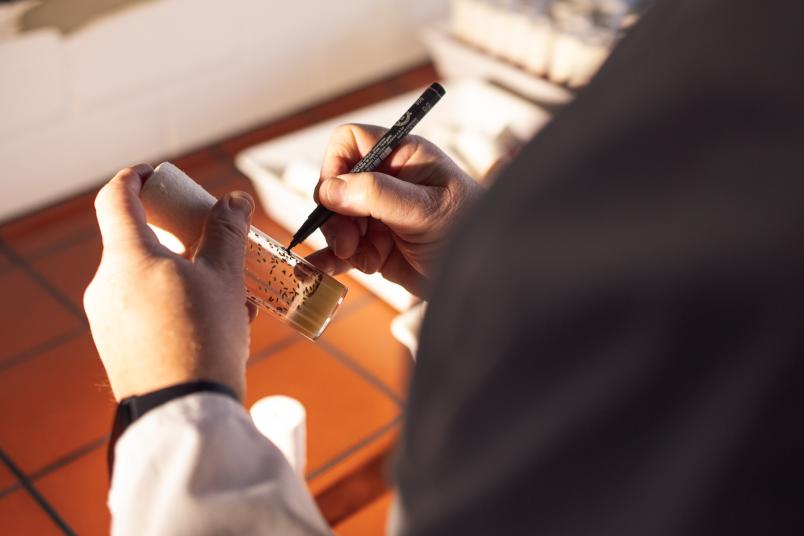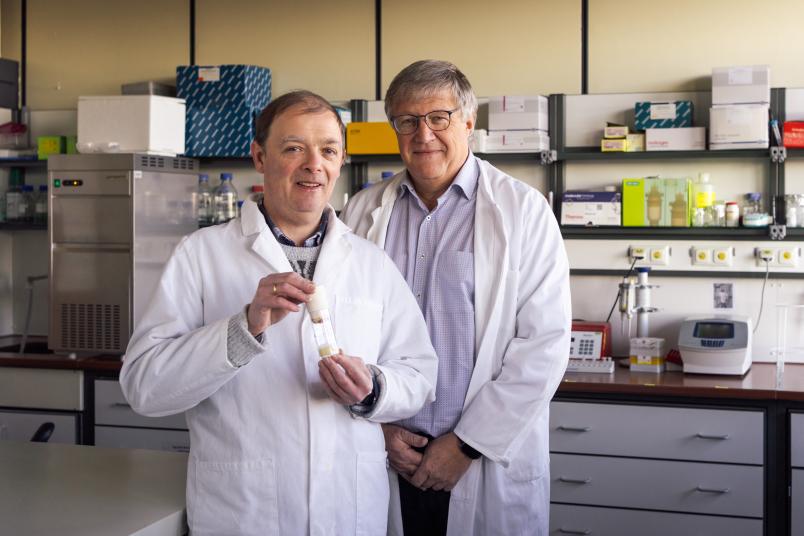Biology How Fruit Flies Smell CO2
CO2 is an important source of information for insects. And the receptors that help them to detect it might also be useful for completely different applications.
Mosquitoes in search of blood as well as fruit flies looking for a place to lay their eggs navigate using CO2, which is produced during respiration or in fermentation processes. A complex of various odor receptors that can detect CO2 has already been identified in mosquitoes. Researchers at Ruhr University Bochum, Germany, have now shown that individual receptors found in fruit flies can also detect CO2. They also identified molecules that blocked the CO2 receptors. The team headed by Dr. Paul Ziemba, Alina Mück and Professor Klemens Störtkuhl from the Sensory Neuroscience research group reported their findings in the journal PLOS ONE, published online on December 29, 2023.
Individual receptors are also able to detect CO2
In mosquitoes, a receptor complex containing among others the receptors Gr21a and Gr63a is responsible for CO2 detection. However, it was unclear whether CO2 binds directly to the receptors or whether CO2 sensitivity results from the interaction with other proteins. The Bochum-based team was determined to find the answer. To this end, the researchers employed a measuring system that has been established at Ruhr University Bochum for many years. It can be used to examine individual receptors without animal testing and to quickly screen for various odorants.
The researchers injected the isolated receptors into frog egg cells. Using electrophysiological measurements, they recorded the response of the receptors when they came into contact with CO2. They demonstrated in the process that individually Gr21a and Gr63a can detect the CO2 molecule directly, albeit somewhat less effectively than when embedded in a protein complex.
Citronellol blocks receptors
The team also tested a number of potential receptor blockers. In addition to already known blockers, the researchers discovered that the substance citronellol suppresses the ability of the Gr21a and Gr63a receptors to detect CO2. “Citronellol is found in a number of insect repellents,” explains Störtkuhl. “It could make you virtually invisible to mosquitoes.”
Biosensor in the works
The new findings are to be incorporated into the development of a CO2 biosensor, which the Bochum team is researching in cooperation with the Institute of Aircraft Systems in Stuttgart. “This should enable us to detect CO2 in liquid media, which is something that as yet can’t be done,” says Störtkuhl. CO2 sensors are used on the International Space Station, for example, where they must consume as little energy as possible. Given that physical measurement methods are not very energy-efficient, a biosensor could be a great alternative. It may also be possible to detect other volatile substances with the sensor in the future.

